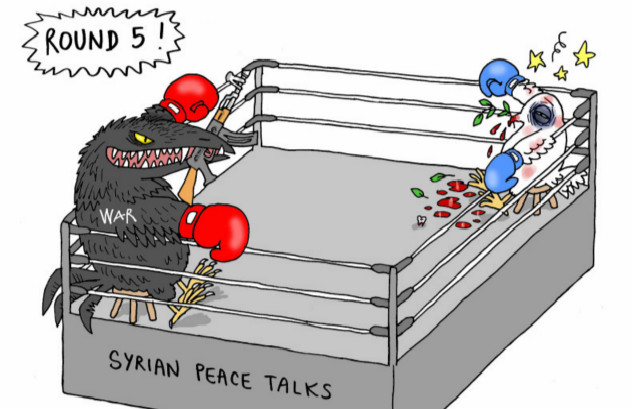No doubling down on old model
It is premature, of course, to conclude that a services-led transformation to slower growth is now at hand. The latest data hint at such a possibility, with the service sector expanding at what would be an annual rate of an 8.3 percent in the first quarter of this year - the third consecutive quarter of acceleration and a half-percentage point faster than the 7.8 percent first-quarter gain recorded by manufacturing and construction.
Not surprisingly, China skeptics are putting a different spin on the latest growth numbers. Fears of a shadow-bank-induced credit bubble now top the list of concerns, reinforcing longstanding concerns that China may succumb to the dreaded "middle-income trap" - a sustained growth slowdown that has ensnared most high-growth emerging economies at the juncture that China has now reached.
China is hardly immune to such a possibility. But it is unlikely to occur if China can carry out the services and consumption rebalancing that remains the core strategic initiative of its 12th Five-Year Plan (2011-15). Invariably, the middle-income trap afflicts those emerging economies that cling to early-stage development models for too long. For China, the risk will be highest if it sticks with the timeworn recipe of unbalanced manufacturing- and construction-led growth, which has created such serious sustainability problems.
If China fails to rebalance, weak external demand from a crisis-battered developed world will continue to hobble its exports, forcing it to up the ante on a credit- and investment-led growth model - in effect, doubling down on resource-intensive and environmentally damaging growth.
Financial markets, as well as growth-starved developed economies, are not thrilled with the natural rhythm of slower growth that a rebalanced Chinese economy is likely to experience, and resource industries - indeed, resource-based economies like Australia, Canada, Brazil, and Russia - have become addicted to China's old strain of unsustainable hyper-growth. Yet China knows that it is time to break that dangerous habit.
The United States is likely to have a different problem with consumer-led growth in China. After all, higher private consumption implies an end to China's surplus saving - and thus to the seemingly open-ended recycling of that surplus into dollar-based assets such as US Treasury bills. Who will then fund America's budget deficit - and on what terms?
Just as China must embrace slower growth as a natural consequence of its rebalancing imperative, the rest of the world will need to figure out how to cope when it does.
The author, a faculty member at Yale University and former Chairman of Morgan Stanley Asia, is the author of The Next Asia. Project Syndicate
(China Daily 05/03/2013 page8)





















